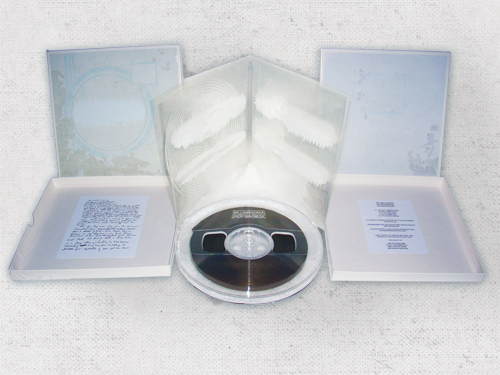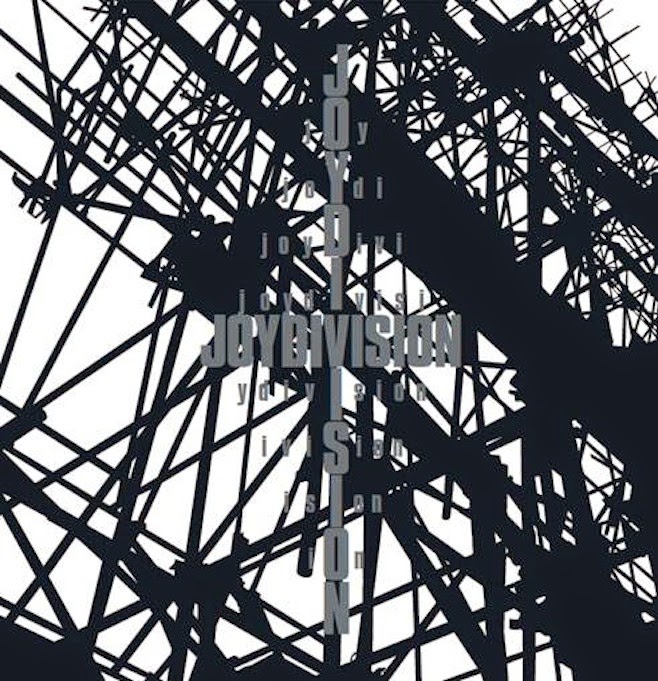A post in anticipation of Record Store Day next weekend. Discuss: similarities and differences between the kinds of books HM publishes, and the resurrection of vinyl.
A long time ago, when I first started printing books, I was asked the dreary future-of-the-book question given the digital blah blah blah. My answer (see here for the short version, under Why? at the bottom) was, this could be the best possible situation for people interested in books published with attention to craft & materials. In a world where any book could theoretically be available in an easily searched format that takes up no physical space in our life, people will rediscover the pleasures of a well-made book. By way of example, the resurgence of vinyl and its focus on the quality of manufacture. I don't have a turntable anymore, but I'm finding the current vinyl releases much more engaging - for design, production, innovation and content - than whatever contemporary letterpress book publishing scene HM is part of.
In the 1970s and '80s, Canada probably produced the worst-quality vinyl in the world. You'd have to open 10 copies of any new pressing to find one that wasn't warped. They were so light & flimsy, they felt like flexidiscs. Recognizing its own [
The return of vinyl has come with an attention to the quality of pressings that I don't recall in my youth. The standard today is 180 g, and some even come as a high as 350 g. If that's handmade paper, the Canadian vinyl of my youth was recycled tissue. The point being, the people buying these records have an appreciation for the quality that goes into the manufacturing that people didn't have 30 years ago.
It's the discovery by record labels and artists of the "limited edition" I want to discuss. They realize there's a limited market for what they're making: the geeks and scenesters who make weekly rounds of the local record shops. Most bands issuing vinyl now probably would be doing well to sell a couple of thousand copies - peanuts. So, just like publishers of small-run books, they limit supply in the hope of boosting demand. Wu-Tang Clan gets credit for extrapolating this approach to its extreme with the recently announced Once Upon A Time In Shaolin.
This is partly a reflection of the changes that have swept over the music industry since the dawn of the iPod, the decline of labels & the resulting rise of the DIY artist. Everything has gotten smaller, contemporary music keeps fracturing into narrower subcategories, and music geeks always want the thing no one else knows about. These people are willing to pay a premium for the content in a physical (vs digital) form, but that physical form has to be esthetically engaging and well crafted.
[A sidebar: Though presented as limited editions, the limitation often isn't stated, which makes it somewhat moot: everything's limited, it's just a question of how big the final number is. Many of these limited edition records also claim to include an original print. In most cases, this is not accurate: they include a reproduction. Very few include actual prints. The "collector's edition" of Brian Eno's Small Craft on a Milk Sea does come with a legitimate screenprint, while the "limited edition" comes with a reproduction. Legitimate prints vs reproductions, and when & why certain methods of production genuinely limit the quantity produced vs arbitrary or cost-per-unit-based runs presented as limited editions, will be topics for a post in the near future.]
Here's a very quick tour of just a few labels & artists issuing limited-edition vinyl that have come to my attention; there's a lot more out there...
Last year William Basinski, whose compositions are not for the impatient, issued his seminal Disintegration Loops in a massive box (9 LPs, 5 CDs, a DVD & a book) limited to 2,000 copies, which sold out at an issue price of $225. He continues to release new and back list titles in limited editions through his site. If you know his music, you won't be surprised that he's also having some fun with the limited edition concept, like rereleasing an old composition recorded onto recycled quarter-inch tape ("101 handmade copies").
Sly Vinyl, a record shop & label based in Denver. Look under the Format link on its home page: you can choose picture, flexidisc or even lathe-cut ("playable musical artifact") discs!
Brooklyn's Sacred Bones Records has an esoteric roster that includes David Lynch. They've released limited edition pressings of his recent recordings and also soundtracks from some of his films (Eraserhead !). Lynch has really taken to the deluxe/limited-edition vinyl format: he has a new multi-disc album available from his site, & last year I got a copy of his single Good Day Today, released by the UK label Vinyl Factory, primarily because it was designed by Vaughn Oliver. That's another one that boasted an original print that wasn't a print.
The Vinyl Factory boasts its own pressing facility, and it also publishes music-related books, often combined with a vinyl release. Last year's release of a book of art by Massive Attack's Robert del Naja is a good example of how these limited editions typically are described (i.e. marketed):
- 400-page 12" x 12" hardback book with black glitter and pink screen printed cover artwork unique to this edition
- Exclusive art print, signed by 3D, screen printed by Lazarides
- 12-inch vinyl featuring previously unreleased track on A-side, with an etching on side B
- Housed in a bespoke heavyweight cardboard box with cover artwork by 3D
- Limited to 350 copies worldwide, each individually hand-signed and numbered
Format, materials (although is there really such a thing as a bespoke cardboard box?), limitation; not much different than what everyone in the Fine Press Book Association is doing. Except that young people today are actively engaged with and by vinyl, but very few are interested in books produced with the same attention to quality, detail, and esoteric appeal. I remain confident, however, that a renaissance similar to what happened for vinyl will happen for books. As I wrote 15 years ago, people won't necessarily want a lot of books taking up space in their life, but the ones they will want are going to have to be produced in a manner that justifies their physical presence. And that isn't most trade editions.
The one thing I'll be looking for on Record Store Day is the "limited edition" reissue of Joy Division's first EP, An Ideal for Living. A sleazy record shop dude tried to sell me an obviously bootlegged copy for $100 in Montreal 30 years ago; now's my chance to finally get a legitimate limited edition! Even if the actual edition number isn't stated...









